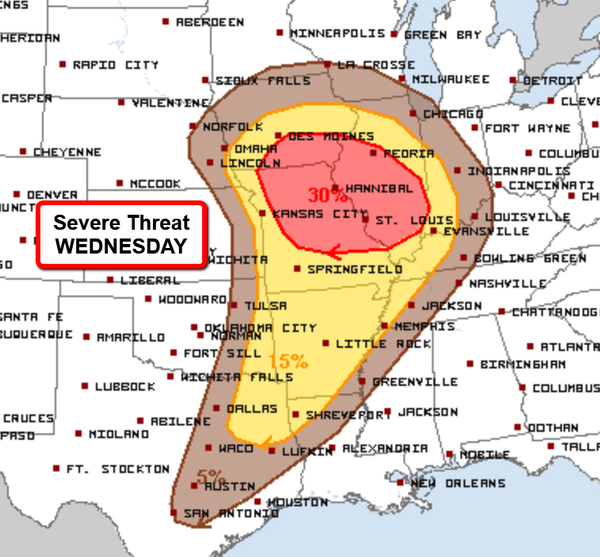Fast-Moving Storms: Recognizing And Responding To Damaging Winds

Table of Contents
Recognizing the Signs of Fast-Moving Storms
Recognizing the early signs of a fast-moving storm is critical for minimizing risk. This involves understanding weather patterns, identifying visual cues, and listening for audio warnings.
Understanding Weather Patterns
Many weather patterns precede fast-moving storms. Rapidly changing barometric pressure is a key indicator, often accompanied by severe thunderstorm warnings issued by meteorological agencies. You might also observe a sudden shift in wind direction, a significant change in temperature, or a dramatic increase in humidity.
- Meteorological Indicators:
- Dark, greenish skies, often described as an ominous greenish-yellow hue.
- Sudden and significant temperature drops.
- The appearance of hail, even small hail, can indicate a stronger storm system developing.
- A rapid increase in wind speed and intensity.
Utilizing reliable weather apps and monitoring trusted news sources for up-to-date information on approaching storms is crucial. Pay close attention to severe weather alerts and warnings.
Identifying Visual Cues
Visual indicators can provide valuable advance warning of approaching intense winds. Look for:
-
Cloud Formations:
- Shelf clouds, low, horizontal clouds that extend from the base of a thunderstorm.
- Wall clouds, large, rotating clouds that often precede tornadoes, a particularly dangerous component of some fast-moving storms.
- Rapidly moving, dark, and ominous clouds.
-
Other Visual Signs:
- Dust devils or swirling debris on the ground.
- Rapidly changing cloud formations, indicating dynamic atmospheric conditions.
- Unusual animal behavior; animals often exhibit signs of distress or seek shelter before a storm hits.
Even subtle changes in the environment should be heeded. Don't dismiss seemingly minor shifts as insignificant.
Listening for Audio Cues
Your ears can also provide vital warnings. Listen for:
- Roaring Winds: A noticeable increase in wind noise, particularly a low, deep roar, indicates strong winds approaching.
- Distant Thunder: While distant thunder isn't an immediate threat, it signals the presence of a thunderstorm and the potential for rapidly increasing wind speeds. The closer the thunder, the greater the danger. Pay attention to the time between the lightning flash and the thunder clap – the shorter the time, the closer the storm.
- Unusual Sounds: Pay attention to unusual, unnatural sounds that may indicate damage occurring.
Distinguishing between distant thunder and the imminent threat of nearby lightning strikes is crucial. If you hear thunder immediately after a lightning flash, seek immediate shelter.
Responding to Damaging Winds in Fast-Moving Storms
Knowing how to respond to damaging winds in fast-moving storms is paramount. This involves pre-planning, immediate actions, and post-storm recovery.
Creating a Safety Plan
A pre-determined safety plan is essential. This should include:
- Securing Outdoor Objects: Bring loose objects inside, secure anything that could be blown away (patio furniture, garbage cans, etc.).
- Identifying a Safe Room: Designate a safe room in your home, away from windows and exterior walls, where you can shelter during the storm.
- Assembling an Emergency Kit: Prepare a kit with essential supplies (water, food, first-aid kit, flashlights, batteries).
- Developing a Communication Plan: Establish a communication plan with family members and agree on a meeting point in case of separation.
Proactive planning significantly reduces risk and improves your ability to respond effectively.
Immediate Actions During a Storm
When a fast-moving storm hits, take immediate action:
- Seek Shelter Immediately: Move to your designated safe room or a sturdy interior location. Avoid windows and exterior walls.
- Stay Away from Windows: Broken glass is a common hazard during high winds.
- Turn Off Electronics: To minimize damage from power surges and lightning.
- Stay Informed: Continue monitoring weather updates for information on the storm's progress.
Different locations require different strategies. If in a vehicle, pull over to a safe location, away from trees and power lines. If outdoors, find immediate shelter in a sturdy building.
Post-Storm Actions
After the storm passes, take these steps:
- Assess Damage: Carefully check for injuries and damage to your property.
- Avoid Downed Power Lines: Treat all downed power lines as live and extremely dangerous.
- Report Damage: Report damage to the appropriate authorities (power company, local government).
- Take Photos: Document the damage for insurance purposes.
- Contact Insurance: Begin the claims process as soon as possible.
Patience is key during the recovery process. Repair and restoration efforts may take time.
Conclusion
Preparing for fast-moving storms involves recognizing the signs – from changing weather patterns and visual cues to the sounds of approaching high winds – and responding swiftly and decisively. Creating a comprehensive safety plan, taking immediate shelter when severe weather warnings are issued, and knowing post-storm procedures are crucial steps in mitigating risks associated with these dangerous events. Learn how to recognize the signs of damaging winds, and prepare for fast-moving storms today. Stay safe during severe weather events by following these guidelines. By being proactive and prepared, you can significantly reduce your risk and ensure the safety of your family and yourself.

Featured Posts
-
 Architektin Bestimmt Endgueltige Bauform Wichtige Ankuendigung
May 20, 2025
Architektin Bestimmt Endgueltige Bauform Wichtige Ankuendigung
May 20, 2025 -
 Manga Disaster Prediction Tourist Cancellations Surge
May 20, 2025
Manga Disaster Prediction Tourist Cancellations Surge
May 20, 2025 -
 Cobolli Claims First Atp Title In Bucharest
May 20, 2025
Cobolli Claims First Atp Title In Bucharest
May 20, 2025 -
 Analyzing The Gop Tax Plan The Reality Of Deficit Reduction
May 20, 2025
Analyzing The Gop Tax Plan The Reality Of Deficit Reduction
May 20, 2025 -
 Michael Strahans Big Interview Get A Look At The Ratings War Strategy
May 20, 2025
Michael Strahans Big Interview Get A Look At The Ratings War Strategy
May 20, 2025
Latest Posts
-
 I Megali Tessarakosti Esperida Stin Patriarxiki Akadimia Kritis
May 20, 2025
I Megali Tessarakosti Esperida Stin Patriarxiki Akadimia Kritis
May 20, 2025 -
 Symposio Megalis Tessarakostis Patriarxiki Akadimia Kritis
May 20, 2025
Symposio Megalis Tessarakostis Patriarxiki Akadimia Kritis
May 20, 2025 -
 Mnaqsht Tqryry Dywan Almhasbt 2022 2023 Fy Albrlman Iqrar Almkhalfat W Alathar Almtrtbt
May 20, 2025
Mnaqsht Tqryry Dywan Almhasbt 2022 2023 Fy Albrlman Iqrar Almkhalfat W Alathar Almtrtbt
May 20, 2025 -
 Esperida Megalis Tessarakostis Stin Patriarxiki Akadimia Kritis
May 20, 2025
Esperida Megalis Tessarakostis Stin Patriarxiki Akadimia Kritis
May 20, 2025 -
 Representatives Push For 1 231 Billion In Oil Company Repayments
May 20, 2025
Representatives Push For 1 231 Billion In Oil Company Repayments
May 20, 2025
